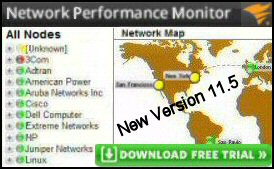Windows PowerShell 4.0
Version 4 seem like a routine upgrade of a mature product. In truth, PowerShell V4.0 lacks the excitement or killer new feature of V3 (Intellisense) or V2 (Remoting).
PowerShell 4.0 New Features
- Installing PowerShell 4.0
- Windows Management Framework 4.0
- PowerShell Desired State Configuration
- Check Your Version of PowerShell
- See now PowerShell v5.0
♦
What’s New In PowerShell 4.0
This is what you get on Windows 8.1 and Server 2012 R2; please note that older operating systems do not support many of these features.
- DSC Desired State Configuration
- Save-HelpGet-FileHash
- Get-NetNat
http://technet.microsoft.com/en-us/library/dn283352.aspx - Get-VMFirmware
- Set-ScheduledJob – Run job immediately. -RunNow parameter
- New-JobTrigger and Set-JobTrigger cmdlets is RepeatIndefinitely
- Test-NetConnection
- Test-VMNetworkAdapter
Installing PowerShell 4.0
Remember that you get PowerShell version 4.0 automatically with Windows 8.1 and Server 2012 R2. No installation is required here.
Note the version number of your operating system; with Windows 8.0 you only get PowerShell 3.0. Unbelievably, In order to get version 4 here you have to upgrade the operating system to 8.1.
If you have plain Server 2012, 2008 R2, or Windows 7, then you can install Windows Management Framework 4.0, and thus get PowerShell 4.0.
Installing PowerShell 4.0 on Windows 7 SP1
What I did was download the Windows Management Framework (WMF) 4.0 from Microsoft's Download Center. The install file was called: Windows6.1-KB2819745-x64-MultiPkg.msu.
The .Net Framework installation, coupled with PowerShell 4.0 upgrade, was beautifully predictable and blissfully uneventful.
Problems with PowerShell 4.0 on Windows 7
Actually, the problem started in PowerShell 3.0, simply, you don't get all the modules and thus a complete set of cmdlets. Sadly, this ommision is by design, the Windows 7 architecture simply does not support some features supplied in Windows 8.1.
Windows Management Framework 4.0
Here is a list of what the Windows 6.1-KB2819745.msu contains:
Updates for:
- Windows PowerShell 4.0
- Windows PowerShell ISE
- Windows Remote Management (WinRM)
- Windows Management Instrumentation (WMI)
- Windows PowerShell Web Services (Management OData IIS Extension)
- The Server Manager WMI provider
New feature DSC:
PowerShell's Desired State Configuration (DSC) is rather like a function, but instead of scripting a 'Process', you specify Nodes and Resource blocks. See more on PowerShell's DSC.
Guy Recommends: A Free Trial of the Network Performance Monitor (NPM) v11.5
v11.5
SolarWinds’ Network Performance Monitor will help you discover what’s happening on your network. This utility will also guide you through troubleshooting; the dashboard will indicate whether the root cause is a broken link, faulty equipment or resource overload.
What I like best is the way NPM suggests solutions to network problems. Its also has the ability to monitor the health of individual VMware virtual machines. If you are interested in troubleshooting, and creating network maps, then I recommend that you try NPM now.
Download a free trial of Solarwinds’ Network Performance Monitor
Traps for Installing WMF 4.0
- Windows 8. No go, it doesn't work. Solution: upgrade to Windows 8.1
- Uninstall any pre-release (beta) versions of Windows Management Framework 4.0
- The old chestnut: choose the correct architecture x64 or x86.
- Don't install WMF 4.0 on any of these servers:
System Center 2012 Configuration Manager (not including SP1)
System Center Virtual Machine Manager 2008 R2 (including SP1)
Microsoft Exchange Server 2013, 2010, or 2007
Microsoft SharePoint 2013 or 2010
Windows Small Business Server 2011 Standard
Uninstalling PowerShell 4.0
If you need to uninstall WMF, then head for the Control Panel\Programs, 'Uninstall a program', and find: KB2819745.
Check Your Version of PowerShell with $Host
Here is simple command to check your version of Windows PowerShell.
# Windows PowerShell Version Check
Clear-Host
$Host
Name: Windows PowerShell ISE Host
Version: 4.0 InstanceId: d36fdafd-f9e9-4642-bc85-6dea29105f61
UI: System.Management.Automation. Internal.Host.InternalHostUserInterface
CurrentCulture: en-GB
CurrentUICulture: en-US
PrivateData: Microsoft.PowerShell.Host.ISE.ISEOptions
IsRunspacePushed: FalseRunspace: System.Management.Automation. Runspaces.LocalRunspace
Advanced Check .Net Version
Here is a script which interrogates the NET Framework section of the registry.
Clear-Host
Get-ChildItem 'HKLM:\SOFTWARE\Microsoft\NET Framework Setup\NDP' -Recurse |
Get-ItemProperty -Name Version -EA 0 |
Where { $_.PSChildName -Match '^(?!S)\p{L}'} |
Format-Table PSChildName, Version -AutoSize
PSChildName Version ----------- ------- v2.0.50727 2.0.50727.5420v3.0 3.0.30729.5420Windows Communication Foundation 3.0.4506.5420 Windows Presentation Foundation 3.0.6920.5011 v3.5 3.5.30729.5420Client 4.5.50938 Full 4.5.50938 Client 4.0.0.0
Note: This information was obtained from a Windows 7 machine.
What’s new in PowerShell 4.0 »
Summary of PowerShell 4.0
While Windows 8 was the catalyst for the release of PowerShell version 3.0, Windows Server 2012 R2 may have been the reason for releasing PowerShell 4.0 in general, and the Desired State Configuration (DSC) in particular.
This is the situation: you get PowerShell version 4.0 automatically with Windows 8.1 and Server 2012 R2. If you have plain Server 2012, 2008 R2, or Windows 7 then you can install Windows Management Framework 4.0 and thus get PowerShell v 4.0.
If you like this page then please share it with your friends
See more Windows PowerShell sections
• PowerShell Home • Introduction • Dreams • 3 Key Commands • Free Permissions Analyzer
• PowerShell Real-life Examples • PowerShell Techniques • PowerShell Syntax • Contact
• PowerShell ISE • PowerShell 2.0 • PowerShell v 3.0 • PowerShell v 4.0 • PowerShell v 4.0
Please email me if you have a better example script. Also please report any factual mistakes, grammatical errors or broken links, I will be happy to correct the fault.

